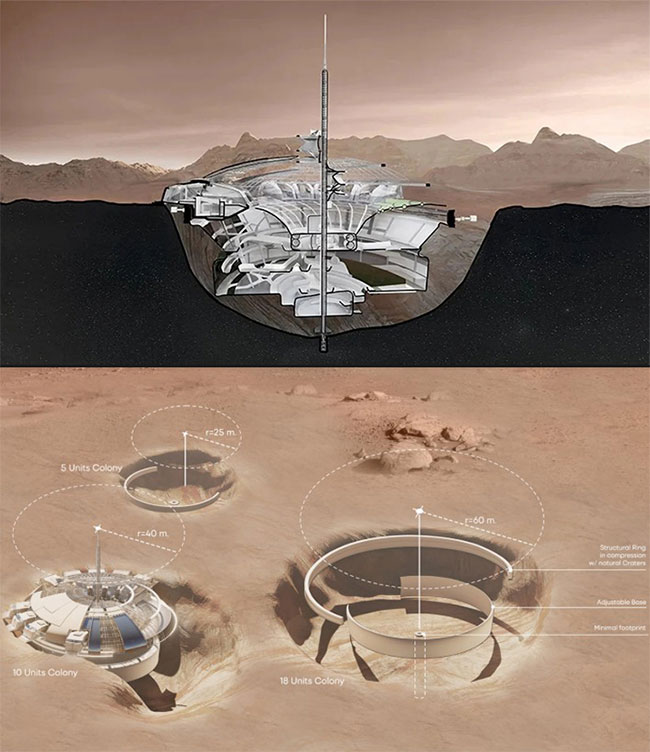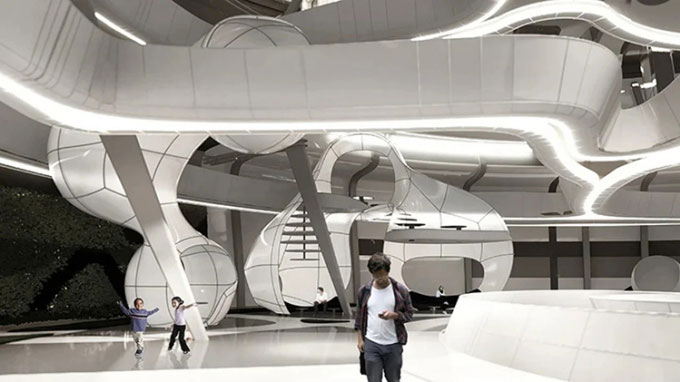Establishing settlements within natural craters on Mars could better protect humans from high radiation environments.
In the context of a booming population, climate change, and increasing pollution, many believe that humanity needs to seek a new world to inhabit in the future. Since the confirmation of water on Mars, scientists have focused on exploring more about this neighboring planet and developing systems for survival there.
Architects Burak Celik, Naz Kaplan, and Zeynep Ege Odabasi recently presented the idea of Genesis v.2, a design prototype for a Martian settlement with a sustainable approach.

Simulation of the Genesis v.2 settlement on Mars. (Image: Celik/Kaplan/Odabasi)
The surface of the red planet is not truly safe for humans. One of the greatest threats is radiation. Therefore, the Genesis v.2 system is designed to settle within natural craters, where radiation levels are relatively low.
In terms of design, Genesis v.2 achieves stability through the joints of the main ring that securely attach the structure to the crater. Meanwhile, a screw-like end of the central tower is tightly secured to the bottom of the crater to enhance its balance and sturdiness. These two elements, the ring and the central tower, form the backbone of the settlement. Consequently, when relocation is necessary, the structure can easily detach. The main ring is expandable, allowing Genesis v.2 to reattach to larger craters.

The central tower and ring form the backbone of the settlement. (Image: Celik/Kaplan/Odabasi)
The relocation of the settlement aims to find the best position for internal production systems, which will utilize various sustainable energy technologies and produce biofuels through algae cultivation.
To maximize production with minimal resources, the structure can also respond to changes in light, temperature, and other weather conditions by repositioning its components.

Simulation of a public space within the Genesis v.2 settlement. (Image: Celik/Kaplan/Odabasi)
In an interview with Interest Engineering, the research team stated that what they hope to achieve with Genesis v.2 is to spark new discussions related to spatial design, particularly architecture on Mars. Additionally, Genesis v.2 serves as a concept design, helping architects to delve deeper into future architectural projects.


















































